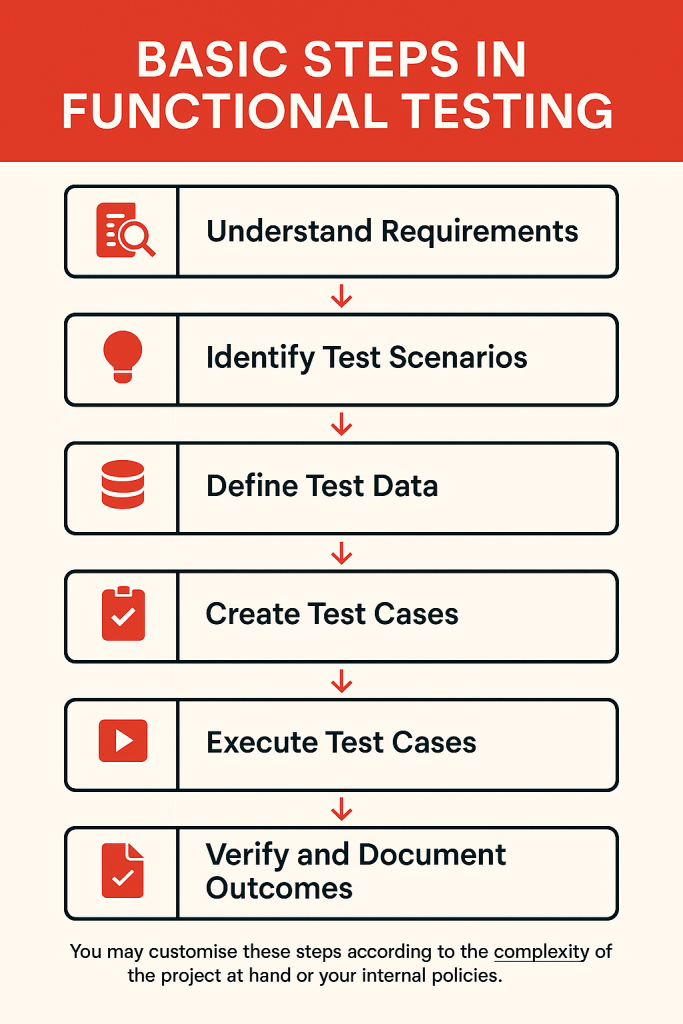Ensuring web applications function flawlessly in today’s fast-paced digital landscape is paramount. Functional testing is a critical component of the software development lifecycle, as it verifies that every feature of your application works as intended. This comprehensive guide will walk you through the fundamentals of functional testing, how to design and write compelling test cases, best practices, common challenges, the tools at your disposal, and real-world examples to illustrate the concepts. Whether you’re a professional, product manager, designer, or student, this article is designed to equip you with the knowledge to enhance the quality and reliability of your web applications.
Components of Functional Testing
A well-structured functional test case comprises several components that contribute to its clarity and effectiveness. Firstly, a test case identifier provides a unique reference, ensuring each case can be tracked and managed properly. Next, a concise description outlines the objective of the test, providing context for what will be evaluated. Preconditions specify any requirements that must be met before the test begins, such as a user being logged in. Test steps follow, detailing each action to be performed in a logical sequence. The expected results section then describes the anticipated outcome based on the application’s specifications. As the test is executed, the actual results are recorded, and any discrepancies noted. Finally, postconditions define the state of the system after the test completes. These components work together to ensure tests are consistent, replicable, and aligned with requirements.
How is Functional Testing done?
The functional testing process begins with understanding the requirements. At this stage, testers review documentation to comprehend how the system should behave. They identify what needs to be tested, including key functionalities and user interactions, ensuring they align with the expectations of stakeholders.
After establishing a solid understanding of the application, the next step is to identify test scenarios. Testers examine use cases, analyse boundaries and input groups, and break down the application’s functions into manageable, testable parts. This ensures all possible user actions and outcomes are considered, from standard paths to edge cases.
Defining test data comes next. Accurate data is essential to simulating real-world scenarios. This includes providing valid inputs, intentionally incorrect values to test error handling, and boundary values to check system limits. Good test data supports thorough and reliable testing.
With scenarios and data in place, testers write the actual test cases. Clarity is key—each step must be easily understood and unambiguous. Expected outcomes are detailed so any deviation can be quickly identified. This helps maintain consistency and accuracy during execution.
Before proceeding to testing, a review phase follows. Test cases are peer-reviewed and validated through walkthroughs to confirm coverage and relevance. Any necessary changes are made to ensure alignment with the latest application state and requirements. Once finalised, the test suite is ready for execution.
Best Practices and Use Cases
Effective functional testing relies on several best practices. First, test cases should be prioritised. Critical application areas that affect user experience or business logic should be tested first to reduce risk and ensure reliability. Traceability is equally important—each test case must correspond to a specific requirement, allowing for easier updates and ensuring full coverage.
Test cases should be updated regularly. As applications evolve, testing materials must reflect the latest changes. This ongoing maintenance keeps testing accurate and relevant, especially when new features are introduced.
Functional testing is applicable in many scenarios. For example, testing user authentication ensures that login processes work under various conditions. E-commerce platforms often test shopping cart functionality to verify that items can be added, removed, or purchased smoothly. Educational platforms might test user dashboards, ensuring that progress tracking and course enrolment features function correctly. In each case, functional testing guarantees that users have a smooth and secure experience.
Conclusion
Functional testing plays a vital role in delivering reliable, high-quality applications. With a structured approach and a focus on thorough, well-defined test cases, businesses can uncover and resolve issues early, helping saving time and resources. By following best practices and using real-world scenarios, testing becomes an asset in the development lifecycle.
For organisations seeking expert support, third-party agencies such as User Experience Researchers Pte Ltd offer comprehensive functional testing services through usability testing. With specialised knowledge and tools, these professionals ensure your application meets both functional requirements and user expectations. Choosing to partner with a testing agency can accelerate your development timeline, enhance product quality, and give you peace of mind.




